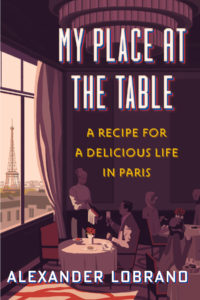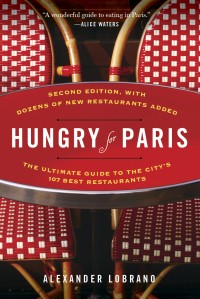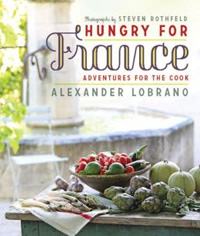Ozu: Good Food but Bad Vocabulary
 Having come across several glowing reports of chef Thierry Marx’s new menu at Ozu, a Japanese restaurant tucked away in the aquarium at the Jardins du Trocadero, I went to dinner on Saturday with the blessedly indefatigible Bruno. For those who don’t know Marx, he’s the chef at Cordeillan Bages in Paulliac just north of Bordeaux, and he has two stars as one of the stars of the portentously and pretentiously named “molecular” cooking espoused by Ferran Adria, the grand priest of the movement. Oh–and what is molecular cooking? A lot of things, but mostly a cooking style that explores and highlights the chemical reactions that take place when food is cooked, which, of course, sounds more like NASA than Escoffier.
Having come across several glowing reports of chef Thierry Marx’s new menu at Ozu, a Japanese restaurant tucked away in the aquarium at the Jardins du Trocadero, I went to dinner on Saturday with the blessedly indefatigible Bruno. For those who don’t know Marx, he’s the chef at Cordeillan Bages in Paulliac just north of Bordeaux, and he has two stars as one of the stars of the portentously and pretentiously named “molecular” cooking espoused by Ferran Adria, the grand priest of the movement. Oh–and what is molecular cooking? A lot of things, but mostly a cooking style that explores and highlights the chemical reactions that take place when food is cooked, which, of course, sounds more like NASA than Escoffier.
I hadn’t eaten Marx’s food for several years, and so was keen to encounter him again, because there are aspects of his work that I very much appreciate. Marx is besotted with Japanese cooking and the Japanese aesthetic, and at his best, he creates some really brilliant and very beautiful hybrid Franco-Japanese dishes. The low-ceilinged blonde-wood diningroom had an airport lounge feel, however, and the aquarium wall cast a sad blue light on the room and disappointed with its sparse fish.
Studying the menu, my guard went up immediately because of the preponderance of surely misappropriated Italian culinary terms, specifically “ravioli” and “risotto.” These words, along with cannelloni, have been so wantonly abused by Parisian chefs that not only do they no longer have any real meaning, they almost invariably guarantee a disppointment of some kind. “Ravioli” is taken to mean anything layered, “cannelloni,” anything round and/or stuffed, and “risotto”–well, the only common link in the various interpretation of this sublime Italian dish seem to mean something cooked in liquid.
My first course of a slow-cooked egg posed on a slice of turnip was meant to be an umami grand-slam, but left me decidedly bored, while Bruno’s sea-eel ravioli was a mess of pasta ribbons with almost none of promised eel. Carmelized squid served to fill a long wait between starter and main course came with the best moment of the meal, a sublime smoked potato puree. When they finally came, main courses were superb. Soy lacquered duck breast was impeccably cooked (rare) and served with turnips and citrus honey, plus a side of vegetables cooked in a sphere of Saran wrap in a microwave oven–a goofy idea that made for a bit of table-side theater when the waiter snipped open the sphere with a tiny pair of scissors and poured it into a bowl. My scallop “risotto” was sublime, but why on earth had Marx called it a risotto? A layer of succulent scallops were capped with a wafer of black sesame nougatine and posed on a soy milk soup that contained tiny chunks of scallop and soy bean sprouts–very tasty but absolutely nothing to do with a risotto.
Desserts brought to mind another of my current bete noire–deconstruction. Young chefs in Paris lovely parsing out a classic dish into its individual elements. So my poire belle Helene was served as a bar of carmelized pear, a tiny pile of grilled almonds, a smear of hot chocolate, a dot of whipped cream and a small ball of ice cream. Similarly, Bruno’s “Granny Smith Structure et Destructure,” was a twee riff on a Granny Smith apple. Both desserts were tasty couldn’t, but maybe because we’d spent much of the afternoon cooking–blanquette de veau au citron confit and apple-and-pear tart–for a mid-week dinner party, I could help but wondering at the persisting attraction of culinary deconstruction, when real construction, i.e. cooking, requires so much loving effort and hard work.
So my verdict on this place is go for lunch–it’s definitely not a dinner restaurant, and come armed with a sense of humor to appreciate those flashes of brilliance that signal what a great chef Thierry Marx could become.
Ozu, 5 avenue Albert de Mun, 16th, 01.40.69.23.90. Metro: Trocadero




